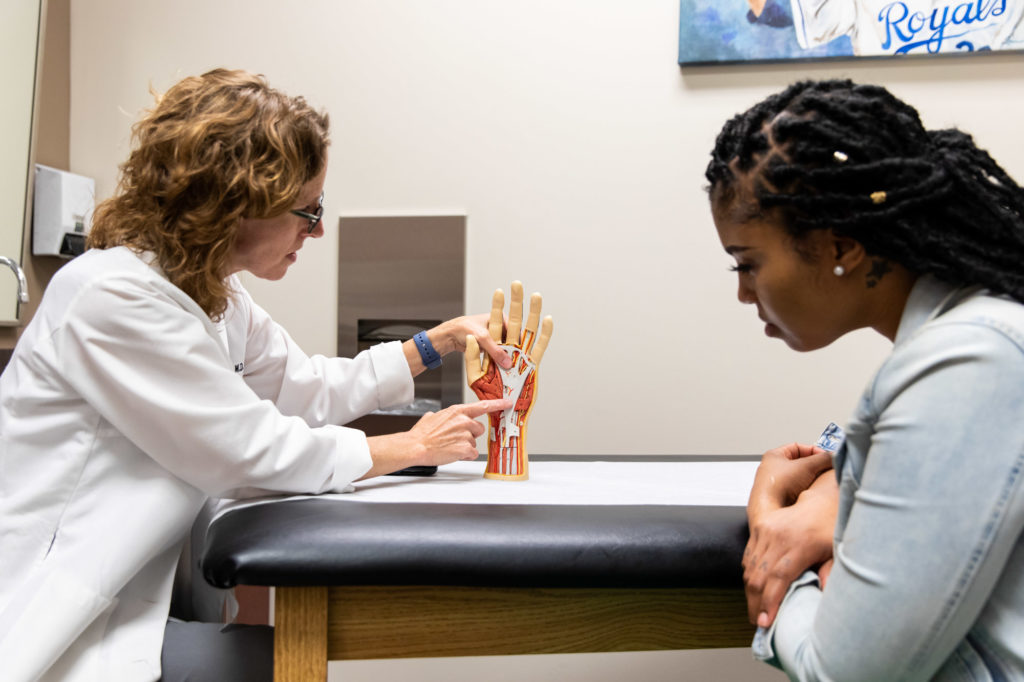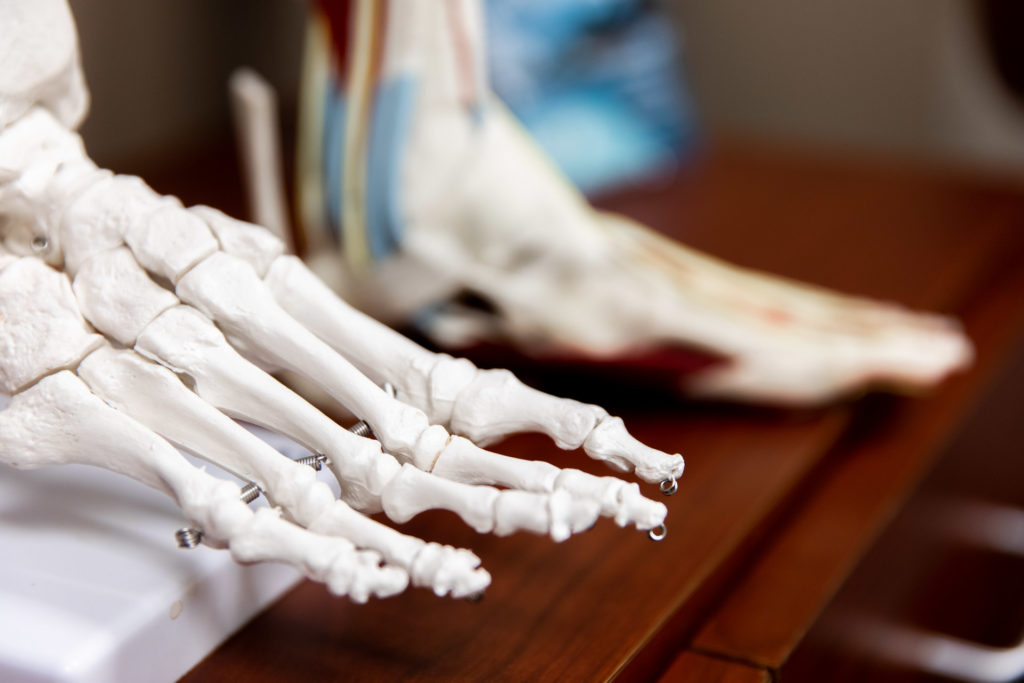
From typing and cooking to writing and working, our hands are in near-constant motion from the time we wake up until the time we go to bed. When your hands are free from pain, it’s easy to forget how much they do in a day.
However, once an injury develops, we quickly realize the extent that we rely on our hands. When even the most basic tasks become difficult because of a hand injury, it’s crucial to find a qualified orthopedic physician to help.
Kansas City Orthopedic Alliance is the Midwest’s premier provider of orthopedic care. As the largest orthopedic practice in Kansas City, we treat thousands of patients each year across our 5 locations: Overland Park, Leawood, Belton, Kansas City, and Blue Springs. Using the latest technology, our physicians can evaluate, diagnose, and treat nearly any type of hand or wrist injury.
One of the most common injuries affecting the hands is carpal tunnel syndrome. In this blog, a carpal tunnel surgeon in Kansas City discusses everything you should know about this condition.
What is Carpal Tunnel Syndrome?
Carpal tunnel syndrome affects the nerve function of the wrist and hand. To better understand this condition, it’s helpful to understand the basic anatomy of the hand.
Anatomy of the Hand and Wrist
There are 3 main anatomical structures that play a role in carpal tunnel syndrome.
1. The Carpal Tunnel
As the name suggests, the carpal tunnel is a structure in your wrist that resembles a small tunnel. The tunnel has bones on the bottom and sides (these are your carpal bones) and a strong ligament on top. Inside the tunnel is an important nerve (the median nerve) along with tendons that help your fingers move.
2. The Median Nerve
The median nerve is a nerve that travels from your forearm down to your fingers. This nerve relays messages between your hands and brain. You can think about this nerve like a telephone line—your fingers tell your brain information (like what you’re touching), and your brain tells your fingers information (like how they should move).
3. Flexor Tendons
Flexor tendons are cord-like structures that connect the fingers to the muscles of your arm. These strong cords allow you to bend your fingers in toward your palm (like when making a fist or gripping something). When you want your fingers to move, the muscles in your arm pull on these cord-like structures, and your fingers follow.
How the Hand Functions
In a normally functioning hand, there is plenty of room in the carpal tunnel to allow the median nerve and flexor tendons to move freely and smoothly. The result is pain-free, strong, and responsive movements when you complete a task with your hands.
For a person with carpal tunnel syndrome, the carpal tunnel is narrow and crowded. The flexor tendons and median nerve don’t have enough room to operate properly, so they get squeezed and compressed together.
This pressure cuts off some of the messages that the median nerve carries from your fingers to your brain. This can result in feelings of numbness, tingling, pain, and loss of sensation in your fingers.
The flexor tendons are also negatively impacted by this compression. The added pressure causes the flexor tendons to swell, further narrowing the space in the carpal tunnel. Without adequate room for these tendons, you’ll notice limited movement in your hand, weakness, decreased grip strength, and pain.
Symptoms
Like any musculoskeletal condition, the symptoms of carpal tunnel can vary from person to person based on your unique anatomy, the underlying cause of the condition, and your overall health. It’s important to find a qualified orthopedic physician for any injury causing you pain.
At KCOA, we often see the following symptoms associated with carpal tunnel syndrome:
- Pain and numbness in the fingers and/or hands
- Weakness in grip and strength
- Tingling or “pins and needles” feeling in the fingers
- Swelling
- Difficulty with fine movements
- Radiating pain up the hand
- Swelling of the hand
- Cold or burning sensation in the fingers

If you have any of the above symptoms and are concerned you might have carpal tunnel, it’s important to consult with a carpal tunnel surgeon in Kansas City. If you have carpal tunnel, surgery isn’t always necessary, but an experienced provider can help you determine the right treatment for your injury.
Causes and Risk Factors
In many cases, the true cause of carpal tunnel syndrome is unknown. However, many factors can contribute to the development of this condition, including:
- Repetitive motions (ex: typing, using a mouse, playing an instrument, working on an assembly line, using vibrating hand tools)
- Hormonal changes in pregnancy and menopause
- Trauma or injury to the wrist
Risk factors for carpal syndrome include:
- A naturally smaller carpal tunnel
- Nerve-damaging conditions such as diabetes
- Inflammatory conditions such as rheumatoid arthritis
- Obesity
Diagnosis
An accurate diagnosis is the first step to treating your injury. A carpal tunnel surgeon in Kansas City can determine your diagnosis and recommend the best hand and wrist treatment for your needs.
At your first KCOA appointment, we’ll sit down with you to discuss your injury. Our providers will complete a full assessment and physical exam to determine the extent and severity of your injury. From there, we may recommend the following testing to confirm carpal tunnel syndrome and/or rule out other hand conditions.
X-Ray
Your carpal tunnel surgeon in Kansas City may order an X-ray of your wrist to rule out the possibility of a fracture (broken bone), osteoarthritis, or other bone-related conditions. In-clinic diagnostic imaging at KCOA makes this process quick and convenient.
MRI
If your physician needs to look at the muscles, ligaments, cartilage, or tendons of your hand/wrist to rule out other conditions, they may order an MRI of the hand. Our staff will help you get set up with an appointment.
Electromyograms (EMG) and Nerve Conduction Studies
EMG measures the electrical activity of your muscles, and nerve conduction studies determine how fast and effectively your nerves and muscles receive electrical signals. This is one of the most definitive tests for carpal tunnel syndrome.
Treatments
KCOA offers carpal tunnel treatments for patients in Lee’s Summit, Blue Springs, Olathe, Prairie Village, Lenexa, and the surrounding Kansas City communities.
Nonsurgical treatments
Carpal tunnel syndrome does not always require surgery. At Kansas City Orthopedic Alliance, our physicians prefer to start with conservative, nonsurgical approaches whenever possible. These can include:
Occupational or Physical Therapy
Stretching, strengthening exercises, manual soft tissue work, and hot or cold therapy can help relieve symptoms and improve the deficits in your functioning. Occupational and physical therapists can help guide you through these treatments.
Medications
Your carpal tunnel surgeon in Kansas City may recommend over-the-counter NSAIDs (such as Advil) or prescription medications to help decrease inflammation. Always remember to talk to your doctor before starting NSAIDs.
Injections
Therapeutic injections can help reduce inflammation for a longer period of time (usually 3 to 6 months). During that time, we recommend patients work with a therapist to improve the strength and flexibility of their hands.
Bracing/Immobilization
Temporarily wearing a brace can help your wrist stay in a neutral position while inflammation from your injury subsides. Your physician will prescribe the right brace for your needs.
Surgical Treatment
If you’ve exhausted all nonsurgical treatment options and still have pain, it might be time to consider carpal tunnel release in Kansas City.
Carpal Tunnel Release
Carpal tunnel release is a surgical procedure that relieves the pressure on the median nerve. During this procedure, your carpal tunnel surgeon in Kansas City makes an incision in the band that forms the “roof” of the tunnel, called the transverse carpal ligament. This creates more space in the carpal tunnel and gives the median nerve and tendons the room they need.
At KCOA, we perform carpal tunnel release as an outpatient procedure so you can recover at home. In certain cases, we can use Sonex ultrasound to guide the procedure, which allows us to visualize the inside of your wrist without the need for large incisions or open surgery.
This minimally invasive procedure allows for a faster recovery, so you can get back to the activities you love as quickly as possible. You can expect your hand strength to return within months, but a full recovery may take up to a year.
Learn more about KCOA’s carpal tunnel release in Kansas City.
If you need a qualified carpal tunnel surgeon in Kansas City, schedule an appointment with Kansas City Orthopedic Alliance
At Kansas City Orthopedic Alliance, we’re dedicated to creating a superior patient experience for all. Whether you’re looking for carpal tunnel treatments in Blue Springs or Overland Park, KCOA has skilled carpal tunnel surgeons throughout Kansas City.
We’ve helped thousands of patients treat their pain, restore their function, and improve their quality of life.
For a thorough evaluation, call us at (913) 319-7600 or schedule an appointment today. If you’re struggling with hand or wrist pain but don’t know where to start, use our symptom tracker for treatment recommendations.


